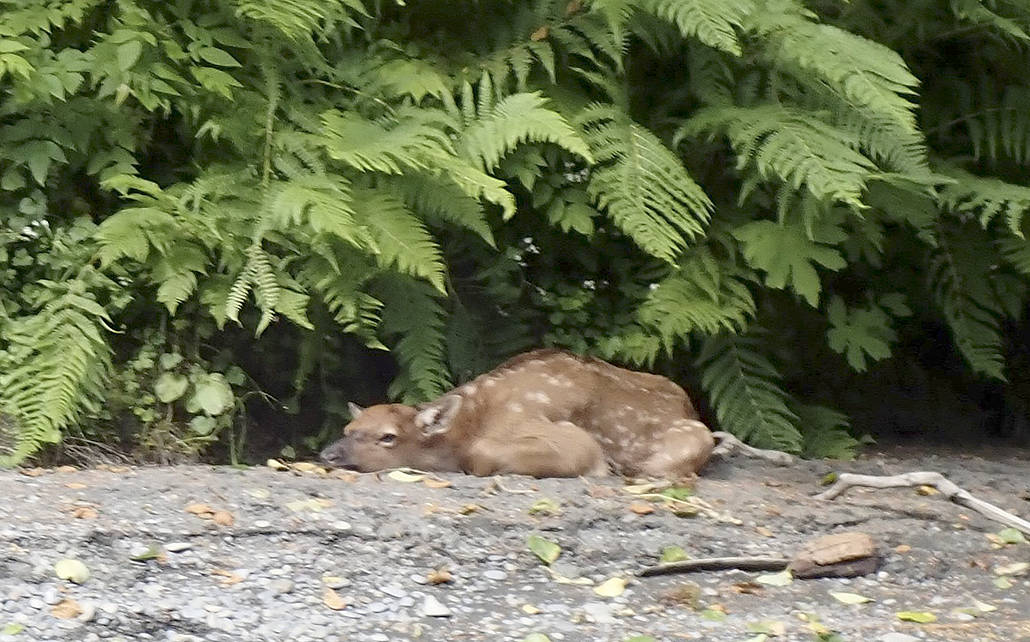Babes in the Woods
By Pat Neal
There is a certain tension in the woods these days. You can feel it in the air. A lot of wild mothers are on edge. This is a nervous time when mother elk and deer have to leave their babies in the ferns and go get a bite to eat to keep the milk flowing.
It is a jungle out there. The woods are full of varmints that all want to feast on a fawn or a calf elk. The best humans can do is to stay out of it and let the baby wild things alone despite the fact that these poor little orphaned critters are prone to wander alone looking pitiful. You have to ignore them and with luck, they will go away.
That was not always the case. Back in the early years of the last century elk calves were worth money. It was all part of a wildlife management experiment that began back in the summer of 1923 when two pairs of mountain goats from Alaska were released at Lake Crescent. Where they immediately put their heads down and charged ranger Chris Morgenroth, who had to climb a tree to escape the sharp, dagger-like horns.
It was all part of a grand scheme where Washington traded our Roosevelt elk for Alaskan mountain goats. The story of trading elk for goats in the Olympics is described in the classic pioneer book, “The Iron Man of the Hoh, The Man Not the Myth” by his daughter, Elizabeth Huelsdonk Fletcher. In the book, Fletcher describes how Alaska was trading Washington mountain goats for elk at a ratio of two elk for every goat. The Washington Department of Game paid Miss Huelsdonk $100 for every elk calf which was huge money at the time.
The book describes how the elk were found in the forest and carried home where they were raised on a diet of milk until they were big enough to walk to Forks where the young elk were eventually shipped to Kodiak Island. Our elk were so cold and lonely for human companionship they started breaking into people’s houses so they were shipped to Afognak Island where they are currently thriving.
I’ll never forget the first time I saw a mountain goat. I was just a kid. We were camping. Not in some fancy RV no. I don’t think they had been invented yet. We were sleeping under the stars at the top of an alpine meadow. Just at daylight, I opened my eyes to see a giant white horned monster licking the dew off my mother’s hair just a foot or so away. The goat was huge but then everything seems bigger when you’re small and looking up at it. I froze. The goat looked me in the eye. I hoped I didn’t have any dew in my hair. After a while, the goat walked over to sniff through the ashes of the campfire. Then he scampered up a cliff and lay down to doze and watch us. He was like a camping mascot.
At the time it never would have occurred to us that the mountain goat was dangerous. Back then families included the now-endangered father figure. My old man was a logger who always carried a good sharp ax. If a mountain goat got frisky it was liable to end up on the barbecue.
Now, after a hundred years in the Olympics, the Park Service says the goats eat rare plants and they’re dangerous. The goats have to go no matter what it costs. And I for one will miss them.



